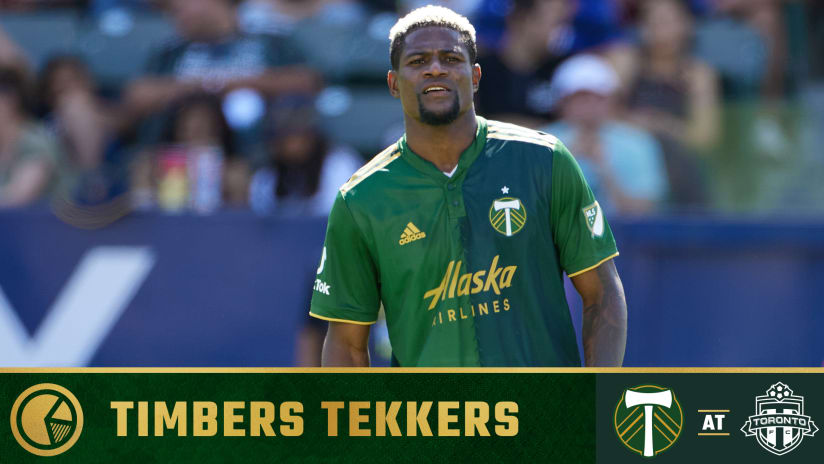PORTLAND, Ore. — By the time the staff walked into Providence Park’s KeyBank Club, Thursday had already changed. The objectives for the Portland Timbers’ assembled crew — general manager Gavin Wilkinson, technical director Ned Grabavoy, head coach Giovanni Savarese and six other staff members — had shifted away from first-round pursuits. What was once the search for a new player transitioned to one of the small reliefs of a sport’s salary-capped world.
That’s the context for the $100,000 in General Allocation Money (GAM) the Timbers acquired Thursday morning. GAM is one the mechanisms in Major League Soccer that allows teams to transcend their salary caps. With it, you can help pay down player costs, potentially getting your team to compliant from out of bounds. Need extra money to fit players into a year’s budget? Allocation Money, be it the General or Targeted (TAM) versions, is there for you.
That’s what made trading Thursday’s eighth-overall pick worthwhile. Portland got $75,000 in GAM for it from Orlando City SC. Another $25,000 will come next season. For a pick in the top third of the draft, it may not seem like much, but the value of picks in an MLS SuperDraft has become moving target. Fewer top talents enter the league through that mechanism. Many are coming through the league’s Academy system and signing to their youth-level clubs without becoming draft-eligible. Combined with the league’s continued influx of international talent, and the draft’s top players are having less of an impact on the field.

Photo: Craig Mitchelldyer-Portland Timbers
At one time, Major League Soccer’s draft may have been like the National Football League’s. The top selections would not only step right into teams’ lineups but, at the highest points of the draft, be impact players from the start. Now, the draft’s impact feels more like Major League Baseball’s, albeit with a length closer to the National Basketball Association’s. Sometimes there are talents who can make the show immediately, but more often than not, fans are asked to take a wait-and-see approach.
By now, Timbers fans have gotten used to waiting and seeing in other ways. On one track, that’s meant waiting to see how players like Marvin Loría, Renzo Zambrano and Pablo Bonilla develop. On another, it’s tracking the progress of Blake Bodily and Hunter Sulte, as well as departed Homegrown Players like Marco Farfan and Foster Langsdorf, when they were still in Portland. While some teams have emphasized the SuperDraft, Portland’s focused their efforts elsewhere. Perhaps there’s no right or wrong in either approach, but when it comes to how you allocate resources, it may be better to emphasize one.
For the Timbers, if that means more emphasis on international scouting, it also makes their allocation money more valuable, something that’s particularly true at this point in the club’s success cycle. Over the next few years, Portland will have a veteran core expected to compete with the top teams in Major League Soccer. Another way to look at it: That core won’t be cheap. The Timbers have a number of players in the primes of their careers, both in terms of their on-field value and the price they command in their contracts. Every dollar the team can get through selling picks, trading international spots, or helping players find new homes is a dollar that goes into keeping a contender together.
Maybe that, too, is something that’s given MLS’s drafts a different context. After all, Portland is not the only team trying to maintain a veteran core. In that world, draft picks are no longer mechanisms to add new talent or trade for other teams’ players. They’re potential GAM. They’re potential TAM. They become additive to a team’s salary cap in ways that arne’t apparent in a mock draft or a draft board. Perhaps more than any other league, Major League Soccer has a draft where selections and cap management are intertwined, and while that’s also very true in the NBA, in basketball, the draft is still the primary way to add new talent.
In MLS, all those considerations impacted last week’s decision to trade Jorge Villafaña – a deal that moved Portland into the eighth spot on Wednesday. They impacted the plans the team had for that asset and, when there was a feeling that the players the team valued wouldn’t fall to eight, how the Timbers wanted to move forward. Seventy-five thousand dollars in 2021 may not be exciting, but in the face of how the Timbers evaluated the draft — and stretching your salary cap could be the difference between maintaining your squad or making a tougher decision – Portland’s priorities were broader.
For fans, the process may have been unsatisfying. We’ve come to love a draft’s drama. But Major League Soccer’s drafts began moving in another direction years ago. Today, Portland played out the realities of our MLS world.












